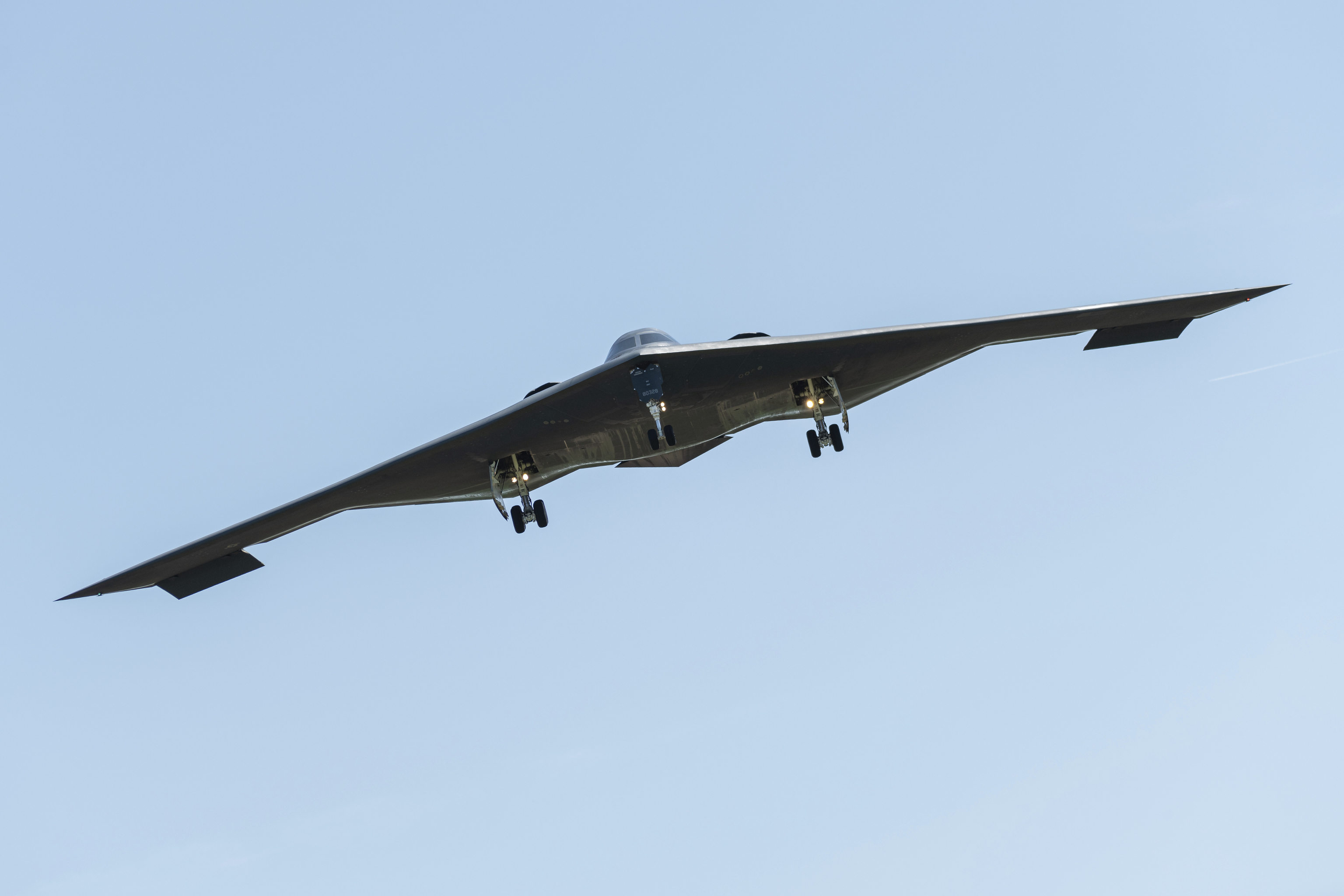Up to 125 planes, stealth fighters, a submarine, numerous air refuelings, distraction flights over the Pacific, and 75 penetrating weapons, 14 of them superbombs weighing 15,000 kilos each that had never been used in combat. These were the main elements of 'Midnight Hammer', the operation with which the United States attacked Iran last night to try to destroy its nuclear facilities and put an end to its program. A large-scale attack, coordinated with troops worldwide, which encountered no resistance, as explained this Sunday morning, Washington time, by the US Secretary of Defense, Pete Hegseth.
The Pentagon official, accompanied by General Dan Caine, Chief of Staff, provided details of a plan "This is a plan that took months and weeks of positioning and preparation, so that we could be ready when the president of the United States called. It involved precision, distraction, and maximum operational security. It took a great deal of precision. It involved misdirection and the highest [level] of operational security. Our B-2 bombers went in and out of these nuclear sites without the world knowing at all. It was historic, a strike that included the longest B-2 Spirit Bomber mission since 2001 and the first operational employment of the MOP, a massive ordinance penetrator. As President Trump stated, the United States does not seek war, but "we will act swiftly and decisively when our people, our partners or our interests are threatened" stated the senior military leader.
The officials, emphasizing that it was not a declaration of war, that they do not seek a regime change, and sternly warning of possible reprisals, explained in great detail the intricacies of an attack in which over 125 planes participated, including B2 bombers, the only ones capable of carrying such heavy bombs, dozens of tanker aircraft strategically positioned along the designated route to avoid pauses, spy planes and satellites, combat fighters to clear Iranian airspace. And decoy bombers, which departed from the US heading west over the Pacific to avoid detection. The largest attack with this type of bombing in US history and the second-longest mission ever conducted, surpassed only by those that took place in the days following 9/11. "President Trump said he would not tolerate nuclear weapons. He seeks peace, and Iran should follow that path. Last night he stated a truth: any retaliation by Iran against the United States of America will be met with force far greater than what was witnessed tonight."
The seven B2s that carried out the attack departed from the East Coast and crossed Europe from the southern Iberian Peninsula, refueling several times. Simultaneously, another squadron moved in the opposite direction, aiming to create confusion. In recent weeks, the Pentagon had deployed other aircraft to bases in the Pacific and the Indian Ocean, with attention focused there, not on the other flank. "At midnight on Friday and Saturday morning, a large B2 attack package composed of bombers was launched from the continental United States as part of a plan to maintain tactical surprise. Part of the package headed west and to the Pacific as a decoy, a deception strategy known only by an extremely small number of planners and key leaders here in Washington and in Tampa," the general explained.
The "main attack package" consisting of seven B2s, each with two crew members, advanced "with minimal communications during the 18-hour flight to the target area. The B2s connected with escort and support aircraft in a complex and tightly synchronized maneuver that required exact coordination among multiple platforms in a narrow airspace, all conducted with minimal communications. Around 5:00 p.m., Washington time, and just before the attack package entered Iran, a US submarine launched over two dozen Tomahawk land-attack cruise missiles against key surface infrastructure targets in Isfahan, while the Midnight Hammer attack package entered Iranian airspace," he added.
During this phase, the United States employed various deterrence tactics, including decoys, "while fourth and fifth-generation aircraft advanced ahead of the attack package at high altitude and high speed, sweeping the package front for enemy fighters and threats of surface-to-air missiles. As they approached Fordow and Natanz, the US protection group used high-speed suppression weapons to ensure the safe passage of the package. At this time, we have no reports of any shots fired at the US attack package during its arrival around 6:40 p.m.," stated the Chief of Staff.
Around 6:40 p.m., always Washington time and 1:40 a.m. in Spain, "the lead B2 dropped two GBU 57 Massive Ordnance Penetrator weapons on the first of several target points in Fordow. The remaining bombers also hit their targets, with a total of 14 massive penetrating bombs dropped. The three Iranian nuclear infrastructure targets were hit between 6:40 p.m. and 7:05 p.m., around 2:10 a.m. local time in Iran. The Tomahawk missiles were the last to strike Isfahan to ensure we maintained the element of surprise throughout the operation. After the weapons were released, the Midnight Hammer attack package left Iranian airspace and began its return home."
According to the Pentagon, Iranian fighters did not take off, and Iranian surface-to-air missile systems did not detect us during the mission. In total, US forces employed approximately 75 precision-guided weapons during this operation, including the formidable 14 superbombs, each weighing nearly 15,000 kilos, and 57 massive artillery penetrators, "the first operational use of this weapon in history. The final combat damage assessment will take time, but initial assessments indicate that the three sites suffered extremely severe damage and destruction," stated the military official, more cautious than the President and Vice President, who have spoken of "destruction" or "Pulverization" and a "final blow to the program."
